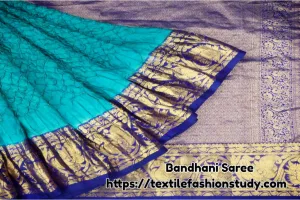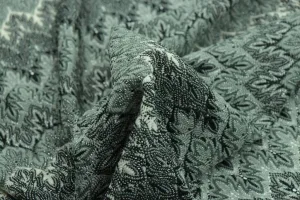Table of Contents
Definition of reactive dyes
The dyeing operation is performed by the reaction between fiber and dyes. Some dyes are water-soluble, and some are water-insoluble. Some fibers have an affinity for dye; others have no affinity for dyes. So dyeing depends on both fiber and dyes’ chemical properties. Before dyeing, we have to consider this factor.
Reactive dyes are the most common and widely used dyes all over the world. Most of the dyeing of natural fiber is done by reactive dyes. Reactive dyes have worldwide acceptance by the dyeing technologist for dyeing cotton. This article is about reactive dyes.
Dyeing Characteristics of Reactive Dyes
Reactive dyes are the only class of dyes that make a covalent bond with the fiber and become part of it. This can be described as:
Reactive dyes + Fiber = Reactive dye-Fiber (Covalent bonding)
If the general structure of a reactive dye is “R-B-X,” then
R-B-X + Fiber = R-B-X-Fiber (Dyed fiber)
Here,
- R = Chromophore Group (Azo, Anthraquinone, Phthalocyanine, Metal complex group)
- B = Bridging Group ( Imino, Ethyl & Methyl, Oxide, Sulfide group)
- X = Reactive Group (-Cl, -Br, -SH, -OCH, etc)
Examples of reactive dyes:
Classification of Reactive Dyes
Reactive dyes are classified depending on the chemical construction and the application methods of temperature. They are-
By Depending on the Chemical Constitution:
Depending on their chemical constitution, reactive dyes can be classified as:
- Chlorotriazine Dyes (MCT)
- Vinyl Sulphone Dyes (VS)
- Heterocyclic Helogen Containing Dyes (HHC)
- Mixed Dyes (MCT-VS)
By Depending on Application Methods of Temperature:
Depending on application methods and temperature, reactive dyes can be classified as:
- Cold-brand reactive dyes: This type of reactive dye is applied at very low temperature. Temperature lies between 25 -50 degree Celsius. They are highly reactive with fiber on this temperature.
- Medium brand reactive dyes: This type of dyes is applied in a medium temperature range is 40 – 60 degree Celsius. Their reactivity is medium with fiber.
- Low brand reactive dyes: This type of dyes has very low reactivity properties with fiber with comparison with medium and high brand reactive dyes. Dyeing is carried out on 60 -90 degree Celsius.
Properties of Reactive Dyes
The following are the properties of reactive dyes. They are-
- Firstly, reactive dye is anionic in nature.
- Secondly, reactive dye is a water soluble dye.
- Thirdly, they have better wash and light fastness properties.
- After that, they have better substantivity.
- Therefore, they form strong co-valent bond with the cellulosic fiber.
- Moreover, alkaline condition is must required for dyeing.
- Further, electrolyte is must for exhaustion of dyes in the fiber.
- A certain amount of dyes are also hydrolyzed during application.
- Additionally, wide range of color can be produced with reactive dyes.
- Lastly, comparatively cheap in price.
Influencing Factors of Reactive Dyes
The dyeing of cellulosic fiber with reactive dyes is influenced by some factors. The following factors should consider during the dyeing operation.
- pH: Reactive dyeing is done in an alkaline conditon for this reason pH of the dyeing bath should control. pH should be between 11.5 -11.
- Temperature: Temperature should fix depending on the brand of reactive dyes.
- Concentration of electrolyte: Concentration of electrolyte depends on the type of shade.
- Time: Dyeing time should be between 60 – 90 minutes.
- Liquor ratio: Huge amount of water is use during dyeing operation. Higher the liquor ratio betters the efficiency of dyeing.
In sum, this dyes have some advantages and disadvantages to use. Different famous dyes manufacturing companies produce reactive dyes with different characteristics. So, select your ones depending on your demand.






13 comments
Mohammad Mahedi Hasan
Amazing
Khizar Ali
well done
Chanchal Singh
Excellent
Mustafa Ahmed Khan
Sometimes hydrolysis occurs which makes the dye unreactive. To prevent the hydrolysis we can do certain things.
* We can control the temperature as hydrolysis increases with the increase in temperature.
* We can prepare the solution of dye and Alkali separately.
* Do not keep dye and Alkali together for a long time.
Dhananjay Shah
Plz explain reactive dyes types like vinyl sulfon and other
logitha
use full for our project
Md. Mamun Khan
very very happy & to thanks
Kishor dada
Why in printing with synthetic thickener fabric becomes stiffness any role of mono / bivalent etc class of dyes?
Bablu L Regar
Reactive dye described in easy language……soo thnku
PIYUSH SRIVASTAV
it is good information for students in term of reactive dye.
mohamed abo eissa
good job
M.lingeshwaran
Fine
spchemtech1
While dyeing the reactive groups of reactive dyes forms covalent bond between fibre polymer and dye which makes dye integral part of fibre. Hence, they are known for its enhanced fastness property.
There are some Limitations of these dyes:
Incomplete fixation with hydrolysis
Need for wash-off (for high WF)
Require high concentrations of salt which affect natural balance of watercourses
High pH
Few “AOX” dyes can be potentially harmful to the environment